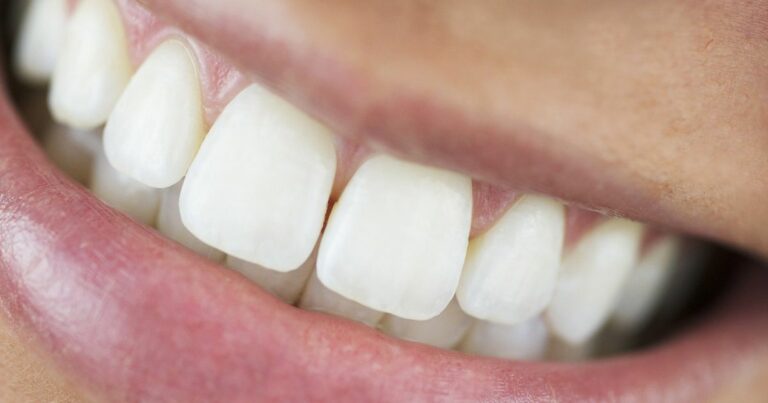When Should Your Child See an Orthodontist?
Knowing the right age for your child to see an orthodontist is crucial.
Early intervention braces for kids can prevent more severe dental issues and set the stage for a healthier smile.
Let’s explore when and why your child should have their first orthodontic consultation.
The Ideal Age for an Orthodontic Visit
Experts recommend that children should have their first orthodontic evaluation by the age of seven. This may seem early, but it allows orthodontists to assess the development of the teeth and jaw. At this age, many children have a mix of baby teeth and adult teeth, providing a crucial window for identifying potential issues.
Why Early Consultation Matters
Early consultations can prevent more severe problems down the line. By addressing issues early, orthodontists can guide the growth of the jaw and teeth. This proactive approach can lead to simpler and less invasive treatments later on.
Furthermore, early intervention can minimize the need for extensive orthodontic work in the future. For instance, correcting a crossbite or an underbite early can prevent the need for surgical interventions later.
Read next: Why Do Kids Need Braces?
What Happens During the Initial Exam
During the initial exam, the orthodontist will conduct a thorough evaluation. This typically involves taking an X-ray to view both the baby and adult teeth. The orthodontist will also visually inspect the mouth to check for alignment and spacing issues.
This process is straightforward and usually takes about 30 minutes. Parents can expect to receive a detailed report on their child’s dental health, including any potential concerns.
Key Issues to Look For at Age Seven
- Bite Issues: Misalignments that can lead to problems with chewing or jaw function.
- Oral Habits: Thumb sucking or prolonged pacifier use can affect tooth alignment.
- Crowding: Lack of space for adult teeth can lead to crooked teeth.
- Crossbite: This occurs when upper teeth sit inside the lower teeth, which can lead to jaw problems.
- Underbite: A misalignment where the lower teeth are positioned further forward than the upper teeth.
Identifying Oral Habits and Their Consequences

Oral habits, such as thumb sucking or tongue thrusting, can significantly impact dental alignment. These habits can lead to conditions like an open bite, where the front teeth do not meet when the mouth is closed.
It’s crucial to identify and correct these habits early. If left unaddressed, they may require more complex treatments, including braces or even surgery, to rectify the damage.
Understanding Crowding and Its Implications
Crowding occurs when there isn’t enough space for adult teeth to emerge properly. This can lead to overlapping teeth, which can complicate oral hygiene and increase the risk of cavities.
During the orthodontic evaluation, the orthodontist will assess the spacing of the teeth. If crowding is identified, they may recommend interventions to create more space, such as using spacers or expanders.
Addressing crowding early can lead to a more straightforward treatment plan in the future, potentially reducing the need for braces or other corrective measures.
The Importance of Correcting Cross Bites Early
Cross bites can lead to serious long-term issues if not addressed promptly. When the upper teeth sit inside the lower teeth, it can cause uneven wear on the teeth and jaw problems.
Correcting a cross bite early can prevent the jaw from growing improperly. This helps ensure a more balanced facial structure and can reduce the risk of needing surgery later in life.
Early intervention allows for the use of less invasive treatments, which can be more comfortable for children. The goal is to guide the growth of the jaw and teeth to promote a healthy bite.
Recognizing Signs of a Cross Bite
- Jaw Discomfort: Children may experience pain or discomfort in their jaw when chewing.
- Uneven Tooth Wear: Look for signs of wear on the teeth that seem disproportionate.
- Jaw Shifting: If the jaw shifts to one side when the mouth is closed, this can indicate a cross bite.
Dealing with Early Tooth Loss
Early tooth loss can create gaps that lead to misalignment of adult teeth. When baby teeth fall out too soon, adjacent teeth may drift into the empty space, causing complications for incoming adult teeth.
It’s essential to monitor your child’s dental development closely. If a tooth is lost prematurely, an orthodontist can provide solutions to maintain space for the adult tooth.
Options include space maintainers or other appliances that help ensure adult teeth have room to emerge correctly. This proactive approach can save your child from more extensive treatment in the future.
Strategies for Managing Early Tooth Loss
- Regular Dental Check-Ups: Ensure routine visits to the dentist to monitor tooth development.
- Discuss Space Maintainers: Ask your orthodontist if your child needs a space maintainer after losing a tooth.
- Encourage Good Oral Hygiene: Maintain a healthy mouth to prevent further dental issues.
Phase One vs Phase Two Treatments
Orthodontic treatment can be divided into two phases. Phase One typically occurs when children have a mix of baby and adult teeth, while Phase Two is when most or all adult teeth have erupted.
Phase One focuses on correcting specific issues such as cross bites, crowding, or bite problems. This phase generally lasts about a year, and the goal is to create a solid foundation for future dental development.
Once Phase One is complete, children may be given retainers to help maintain their new dental alignment as their adult teeth come in. Phase Two usually involves braces or other corrective devices to fine-tune the alignment.
Benefits of Phase One Treatment
- Prevention: Addresses problems before they become more severe.
- Less Invasive: Often requires less extensive treatment later.
- Improved Comfort: Helps alleviate discomfort caused by misaligned teeth.
Preparing for Future Orthodontic Needs
As children grow, their orthodontic needs may change. It’s vital to maintain open communication with your orthodontist regarding your child’s dental development.
Regular evaluations can help track changes and determine the best time for Phase Two treatment. This proactive approach ensures that any issues are addressed promptly.
Parents should also educate their children about the importance of maintaining good oral hygiene to support orthodontic goals. This includes brushing, flossing, and regular dental check-ups.
Key Considerations for Future Treatments
- Monitor Growth: Keep track of your child’s dental development and changes in their bite.
- Stay Informed: Ask questions about any concerns regarding their dental health.
- Encourage Healthy Habits: Promote good oral hygiene and dietary choices that support dental health.
The Cost and Accessibility of Orthodontic Consults
The cost of orthodontic consultations can vary, but many practices offer free initial evaluations. This makes it accessible for families to seek professional advice without financial concern.
Investing in early consultations can save money in the long run by preventing the need for more extensive treatments later. Understanding the financial aspects of orthodontic care is essential for planning your child’s dental health.
Additionally, many orthodontists offer payment plans or financing options to help manage costs, making treatment more accessible for families.
Tips for Navigating Orthodontic Costs
- Inquire About Fees: Always ask about consultation fees and payment options upfront.
- Insurance Coverage: Check with your dental insurance to see what orthodontic services are covered.
- Look for Promotions: Many orthodontic offices offer specials for new patients or referrals.
FAQ: Common Questions About Braces and Invisalign
As parents consider orthodontic options, many questions arise. Understanding the differences between braces and Invisalign is crucial in making informed decisions.
Here are some common FAQs:
What is the difference between braces and Invisalign?
Braces are fixed appliances that use brackets and wires to align teeth, while Invisalign uses a series of clear, removable aligners to achieve similar results.
How long does treatment take?
Treatment duration varies based on individual needs, but braces typically require 18-24 months, while Invisalign may take 12-18 months.
Are there age restrictions for using Invisalign?
Invisalign is suitable for teenagers and adults, but younger children may benefit more from traditional braces due to their growing teeth.
Is Invisalign as effective as braces?
Both treatments are effective, but the best option depends on the specific dental issues. Consulting with an orthodontist can help determine the right choice.
What are the costs associated with braces and Invisalign?
The cost can vary widely based on the complexity of the case and the location of the practice. Insurance coverage may also play a role in determining out-of-pocket expenses.





